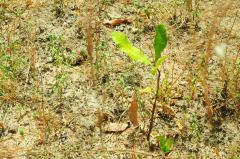
Higher temperatures can lower productivity in non air-conditioned factories like this one owned by bead manufacturer Kazuya in Nairobi, Kenya, says MIT’s Ben Olken. Credit: Amy the Nurse/Flickr
Higher temperatures play a role in economic progress that brings bad news for poorer countries. Their development efforts may be slowed as the world warms further, suggest researchers at the Massachusetts Institute of Technology (MIT) and Northwestern University in Evanston, Illinois. Looking at over 50 years of weather data, MIT’s Ben Olken and his colleagues showed that every 1°C temperature increase shaves 1.3 percent off a poor country’s growth, over the course of a given year. That can have a big impact, considering the World Bank projects that developing countries’ economies will grow by 5.4 percent in 2012. “The key points of our study for thinking about climate change are that a) the impact seems to be larger for poorer countries and b) there is at least the possibility that the economic magnitude of the costs of higher temperatures for poorer countries could be quite large,” he told Simple Climate.
People have been asking whether temperature influences how rich a country is for centuries, with historian Ibn Khaldun discussing it in his book Muqaddimah in 1377. But researchers are still trying to tease out the various ways it can play a part even today. Getting a grip on this subject becomes more important as the world warms in response to human CO2 emissions, Ben noted. “Given the interest in global climate change, the link between temperature and economic growth is clearly important to understand,” he said. “While there are many studies that try to simulate these impacts, we thought it was very important to try to look, historically, at what actually happens when it gets warmer. When we thought of doing this, we were very surprised that nobody had really done it before.”
Ben, MIT’s Melissa Dell and Northwestern’s Ben Jones brought together temperature, rainfall and economic output data for 1950-2003 from 125 countries. In a paper published in the July edition of the American Economic Journal: Macroeconomics they compared temperature and rainfall changes against economic growth. By studying year-to-year changes they could avoid assumptions about what links exist and remove the effects of unchanging national factors. Looking at economic growth both in the same year as the weather data and up to ten years later allowed them to see how long any impacts lasted. While economic growth in poor countries was affected by temperature, there was little effect on growth in rich countries. Changes in rainfall have relatively mild effects on national growth in both rich and poor countries. Their data showed that these were permanent effects on growth, rather than temporary dips in output after which the countries continued the progress they were making before.
Sweaty workplaces, heated politics

Farmer Joel Yiri’s field in Jirapa Village in Ghana. Effects on agriculture are one of the key links between temperature and economic growth. P. Casier/CGIAR/Flickr
The researchers broke down economic data by type of activity, finding two main ways that temperature can hurt economic growth. One was direct effects on farming and industry. “If you think about people working in factories with no air conditioning, you can see how it makes a difference,” Ben told MIT News. The other came through a link between temperature and political instability. With a 1°C temperature rise in a given year, the probability of irregular changes in national leaders, such as coups, goes up by around 3 percent in poor countries.
As these results come from year-to-year temperature changes rather than long-term trends, they can’t be directly taken to relate to global warming. But although countries may gradually get used to higher temperatures, there could also be extra direct effects on their economies. “We can never know precisely what the long run impacts will be,” Ben said. “There can be adaptation, which is not captured in the short-run fluctuations from year to year. It’s also possible the long run could be worse because effects tend to build over time, or because of factors, like sea level rise, not captured by our study.” But Ben and his colleagues do hope that they can provide a fuller view on the area by combining their study with others looking at different effects. “In the last decade there has actually been quite a number of studies similar to ours looking at the impact of temperature on a variety of outcomes,” he said. “We’re going to try to synthesize this research to see what, when taken together, it can help us say about temperature’s impact.”
This research is published in:
Melissa Dell, Benjamin F. Jones and Benjamin A. Olken (2012). Temperature Shocks and Economic Growth: Evidence from the Last Half Century American Economic Journal: Macroeconomics DOI: 10.1257/mac.4.3.66


August 20, 2012 at 1:22 pm
[…] 2012/08/18: SimpleC: Temperature rises could hamper developing world growth […]